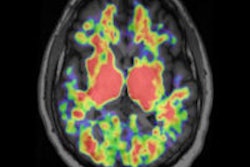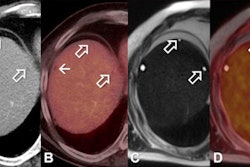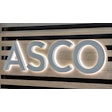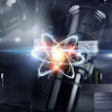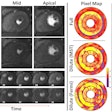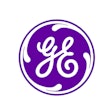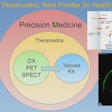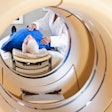The field of molecular imaging and nuclear medicine continues to attract great enthusiasm for what many observers see as limitless possibilities for an expanding range of clinical applications.
PET/MRI, of course, is garnering much of the attention. According to the RSNA, nuclear medicine education exhibit submissions increased by approximately 25% this year, with particularly strong growth in abstracts investigating the pros and cons of PET/MRI and PET/CT.
The discipline of molecular imaging also is broadening its reach into radiology with more studies that address issues such as the use of molecular MRI for multiple sclerosis and optical imaging for colorectal cancer.
Poster sessions in nuclear medicine and molecular imaging begin on Sunday, December 1, and continue through Thursday, December 5, in Room S503AB. Starting times vary slightly from day to day, but poster availability generally begins during the noon hour and continues for 30 to 45 minutes.
Of particular note is Sunday's nuclear medicine poster session (CL-NMS-SUB, 1:00 p.m.-1:30 p.m., Room S503AB), which offers six studies on the roles of FDG and choline with PET/CT to assess various forms of cancer.
On Monday, a four-part refresher course (RC217, 8:30 a.m.-10 a.m., Room S504CD) includes a presentation by Dr. Claus Claussen, director of the diagnostic radiology department at Tübingen University Hospital in Germany, on "MR/PET, A New Perspective of Molecular Imaging." Zang-Hee Cho, PhD, director of the Neuroscience Research Institute at Gachon University of Medicine & Science in South Korea, follows with insights on dedicated brain PET/MRI, its potential, and how soon the hybrid modality may become more common in the clinical environment.
If you're looking for a more hands-on experience in nuclear medicine, there is Tuesday's refresher course (RC351, 8:30 a.m.-10:00 a.m., Room E353C) on PET/CT for the abdomen and pelvis. In the opening presentation, Dr. Erik Paulson, chairman of the department of radiology at Duke University School of Medicine, details the value of iodinated contrast and PET/CT. In addition, Dr. Andrea Rockall, a professor and a consultant radiologist with the Imperial College Healthcare NHS Trust, shows how to recognize typical findings on FDG-PET/CT in pelvic malignancies, as well as gynecologic and urologic cancers.
Wednesday's refresher courses include three presentations on breast imaging (RC511, 8:30 a.m.-10:0 a.m., Room S505AB). Molecular breast imaging (MBI), positron emission mammography (PEM), and breast-specific gamma imaging (BSGI) will be covered.
On Thursday, a two-part refresher course (RC611, 8:30 a.m.- 10:00 a.m., Room S505AB) covers advances in cardiac nuclear imaging with SPECT/CT and PET/CT. Dr. E. Gordon DePuey, director of nuclear medicine at St. Luke's-Roosevelt Hospital Center in New York City, reports on advances in cardiac SPECT, while Dr. Sharmila Dorbala, an assistant professor at Brigham and Women's Hospital in Boston, covers cardiac PET.
If you are still in Chicago on Friday, December 6, there is a refresher course (RC823, 8:30 a.m.-10:00 a.m., Room S403B) on recording and reporting radiation dose. Wesley Bolch, PhD, a professor of biomedical engineering and medical physics at the University of Florida, discusses the necessary parameters to estimate dose during nuclear medicine imaging and therapy. In addition, Frederic Fahey, DSc, director of nuclear medicine physics at Boston Children's Hospital, provides details on how to track radiation dose among pediatric patients.
Your preview of some of the more novel and noteworthy scientific paper presentations regarding molecular imaging and nuclear medicine for this year's annual meeting of RSNA starts below. You also can click here to view the entire meeting program for RSNA 2013.






